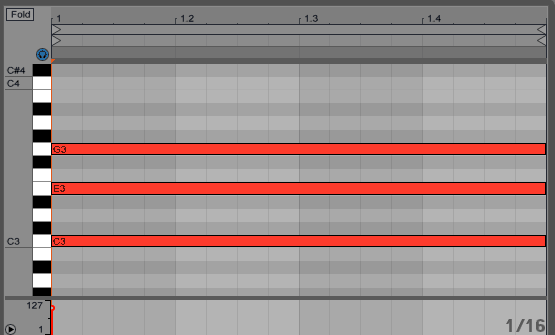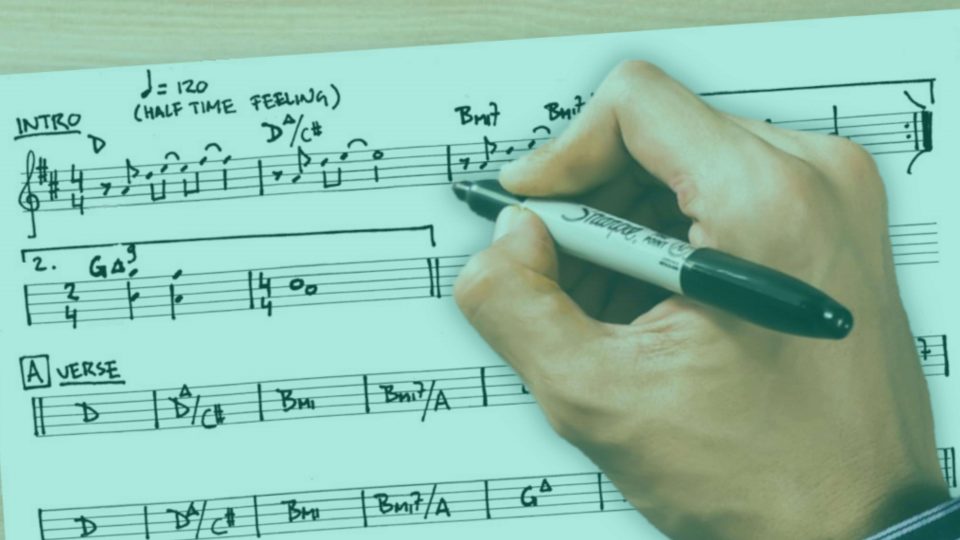Songwriting For Music Producers: Chord Tones Explained
If you want to write impressive melodies that stand out, you should understand the relationship between melodies and chords.
Both your melodies and the chords that they sit above need to relate in an intentional manner else the melody will be weak and may just seem out of place.
It’s all well and good having a chord progression that is fire. But if you were to stick a melody on top that just doesn’t fit… well, the whole thing comes crashing down.
And to write a melody over a chord progression that is equally dope, it’s key to learn how chord tones and non-chord tones allow your melody and chords to interact with one another.
What Are Chord Tones and Non-Chord Tones?
As you know, chords are made up of notes. So, a chord tone is a note that resides in the chord, while a non-chord tone is a note that is not in the chord but does reside in the same scale.
When you’re listening to a piece of music a chord tone in a melody above the chord progression will sound satisfying because it reinforces the chord. A non-chord tone doesn’t sound out of place, but it does create tension.
A strong melody has a balance of both chord tones and non-chord tones.
While your song may not have chords, melodic elements or your bassline are still implying chords.

You can see in the image above the chord of C, which is made of the notes C, E, and G.
The C Major scale includes the notes:
C, D, E, F, G, A, and B.
With this in mind, the notes C, E, and G are all chord tones of the C Major Chord because they make up the chord itself. In the C Major scale, we still have the notes D, F, A, and B remaining because they don’t make up the C Major chord.
If you were to use the G note in your melody on top of your C Major chord, for example, you will have implemented a non-chord tone above your chord and added some excitement to your melody.
Using notes that are outside of the chord but are in the same scale are non-chord tones.
How To Use Chord Tones
Now you can see how chord tones and non-chord tones allow your melody and chords to work together, we can begin to break down the relationship between chord tones and non-chord tones.
You can insert a non-chord tone anywhere in your melody, but you should resolve them quickly. Music is all about tension and release. Non-chord tones add tension, so implementing a release is important.
To resolve this tension, simply use a chord tone in your melody!
You can use a non-chord tone on your strong or weak beats, as well as your off beats. If you were to use a non-chord tone on any of your strong beats then it will have more emphasis – as is the nature of strong beats.
In 4/4 time, your strong beats are the 1st and 3rd beats while your weak beats are the 2nd and 4th beats. The 3rd beat is also called the backbeat, but that’s not overly important here.
If you’re curious as to what we’re actually talking about with strong and weak beats, click on the links in the paragraph above!
Any notes you play on strong beats have more emphasis, and notes you play on weak beats have less. This combination of strong and weak beats works together to form the rhythm of the time signature because they shape the pulse of a melody.
We want to resolve non-chord tones to chord tones, even more so when you play them on a strong beat. The more non-chord tones you use, the more unstable your melody becomes. This isn’t a bad thing. It can lead to some seriously creative music full of tension… as long as there’s a release!
In the Mixxed sample library, you”’ find a variety of melodies that are just waiting to sit on top of your chord progressions!
The sampling revolution has risen in popularity and shaped music since the early 1970s. Sample culture continues to transform how millions of artists and producers do their thing in DAWs.
You too can break conventional norms, challenge the status quo, and open Pandora’s box of sound design.
Mixxed works with a growing number of sample labels and contributors to provide you with an affordable sample subscription service that’s more accessible than any before.
You’ll have access to our growing catalogue of loops, one-shots and sound effects that you can browse, download and keep forever for less than $3 a month.
Sign up today to find your sound!
